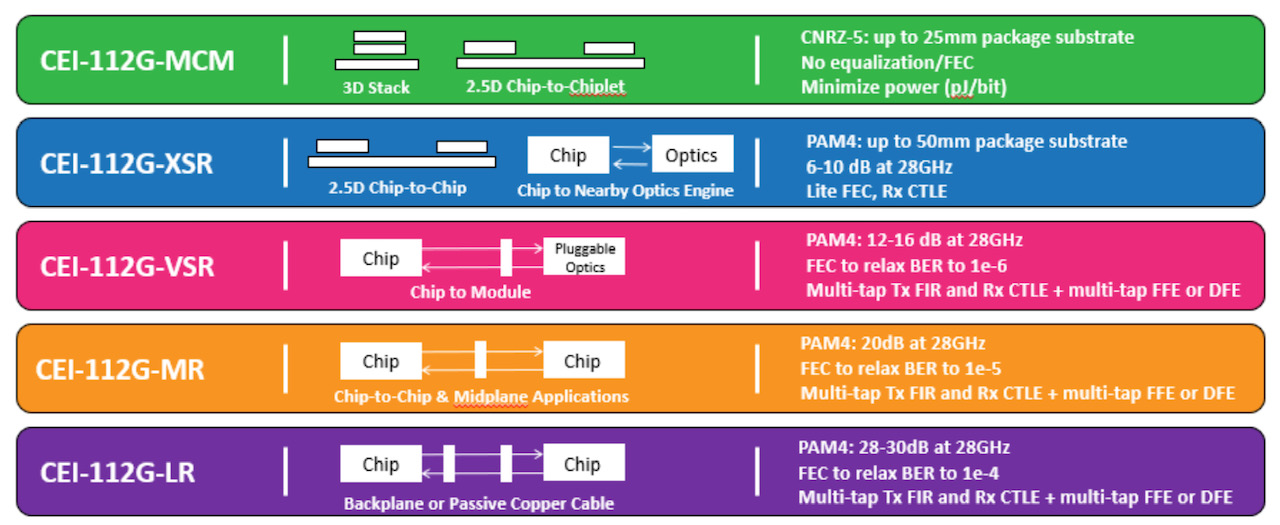OIF to double data rate with a 224G electrical interface
 Wednesday, June 17, 2020 at 5:00PM
Wednesday, June 17, 2020 at 5:00PM - The OIF will develop a faster electrical signalling standard
- The 224-gigabit standard will make optical modules sleeker
- It will also help data centre operators keep up with ever-growing software workloads
 Nathan TracyIt was just a matter of time before the OIF started on the next electrical interface standard beyond 112 gigabits-per-second (Gbps).
Nathan TracyIt was just a matter of time before the OIF started on the next electrical interface standard beyond 112 gigabits-per-second (Gbps).
There have been announcements of new 800-gigabit optical modules along with growing interest in co-packaged optics, where optical interfaces are added alongside semiconductor chips.
Nathan Tracy, TE Connectivity and OIF president, says member companies will need to be creative to develop a 224-gigabit electrical interface. Getting signals to travel at such speeds over workable distances will be a challenge.
The project, to kick-off in August, will begin with a study phase that will help identify the interface types needed.
CEI-112G
The OIF’s electrical interfaces underpin Ethernet networking and the Fibre Channel storage protocol. They are also used for more specialist interfaces such as the chip-to-chip Interlaken standard.
The OIF is currently finishing the 112-gigabit electrical interface that addresses five use-cases. These range from the shortest reach CEI-112G-MCM for chip-to-chiplet interfaces to the longest reach CEI-112G-LR linking chips across a platform’s backplane or via a passive copper cable. (See diagram.)
 Source: OIF
Source: OIF
“The CEI-112G has been a challenging project,” says Tracy. “It’s technically difficult and just as we start to stabilise things, a member will bring a new data point that causes us to check our underlying assumptions.”
The CEI-112G-XSR interface, used to connect ICs to optical engines for co-packaged optics, was the focus of attention at the last OIF meeting held in May. But all five projects are starting to take shape, says Tracy.
The OIF will not give a finishing date for the CEI-112G specification. “We are more focussed on making sure the document is right than hitting a schedule,” says Tracy. “But we are talking about what is needed to close it out.”
Testing of prototypes using the CEI-112G interfaces will happen this year with first commercial designs expected in 2021. The OIF started the CEI-112G work in 2016.
224 gigabits
The OIF will do things differently for the next standard given how hard it is to run electrical signals over copper at such speeds.
It plans to gather information from its members to help figure out the interface types it will need.
“We need our members who are the cloud operators to tell us what it is they are going to try to do,” says Tracy. “What drives their architecture which then drives a certain reach over a certain medium,”
Other issues that will be addressed include modulation schemes for the signalling, test and measurement requirements, and what software tools will need to be able to simulate 224Gbps links.
“The idea is to create a space where members can debate, look at data and do analysis,” says Tracy. This is different from the CEI-112G project where the interfaces types were known from the start.
Challenges
The OIF’s CEI-56G standard that implements 56-gigabit links uses two types of modulation schemes: non-return-to-zero (NRZ) signalling over a 28GHz bandwidth channel or four-level pulse-amplitude modulation (PAM-4) using a 13-14GHz channel. PAM-4 and 28GHz of bandwidth is needed to implement 112-gigabit electrical signalling.
The OIF rule-of-thumb to work out loss when sending a signal is 0.1dB-per-inch-per-gigahertz (dB/inch/GHz). To achieve 224Gbps, simply doubling the bandwidth will not do.
Instead, a combination of several techniques will be needed to make the signalling work. These include advanced printed circuit board (PCB) materials, new connector designs, the use of flyover cables to reduce loss, and working out the best modulation-bandwidth tradeoff.
“It is not a case of trying to push electrons harder,” says Tracy. “It is not just turning the clock up and seeing what we get, nor can we increase the power- and cost-per-gigabit.”
The OIF will likely take between four and five years to finish the CEI-112G standardisation work. Given that the 224-gigabit work is expected to be even harder, the specification document will not be finished before 2025.
Changing requirements
The engineers that developed the 10-gigabit electrical interface would never have envisaged a 224Gbps electrical interface. But each jump to the next speed is less daunting, says Tracy: “When we got to 25 gigabits we saw that 56 gigabits was going to be possible, and when we were doing that, we had the know-how to get to 100 gigabits.”
The computing requirements in data centres are also changing with new workloads for machine learning and artificial intelligence. “The compute architecture is changing, and if the compute architecture changes then so does the switching network architecture,” says Tracy.
Computing is also on the move, shifting from the mega data centre to the network edge.
“So compute is happening differently and that is impacting speeds and data rates,” says Tracy. “How we do it, the technologies we are going to use, it is going to change as we go along.”
It is not just signalling speed that is changing, but where it is used and over what reaches. This will apply to the 224-gigabit standard and to what comes after that.
Webinar
LightWave is hosting a webinar entitled “Cu (See you) Beyond 112 Gbps” with an impressive line-up of speakers on Thursday, June 18th. To register, click here



Reader Comments